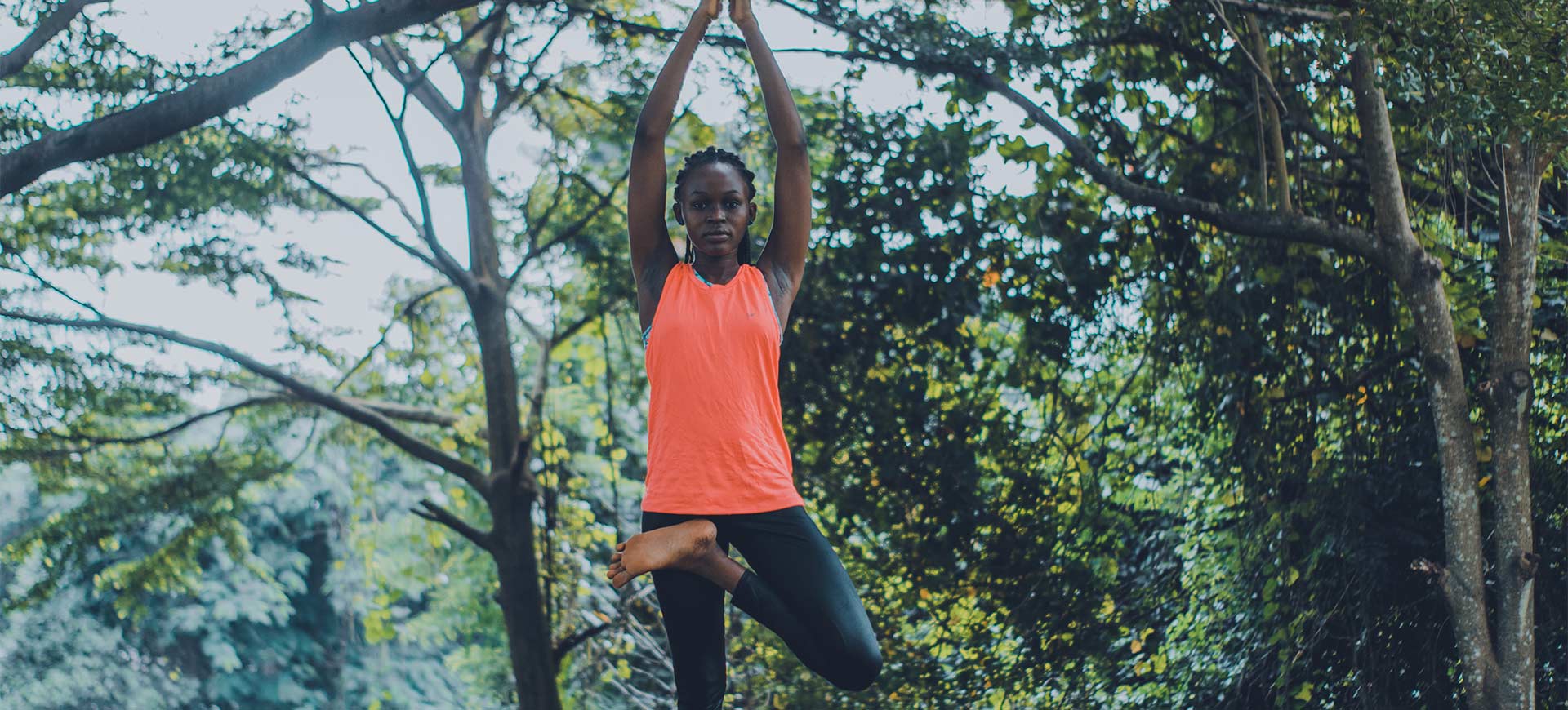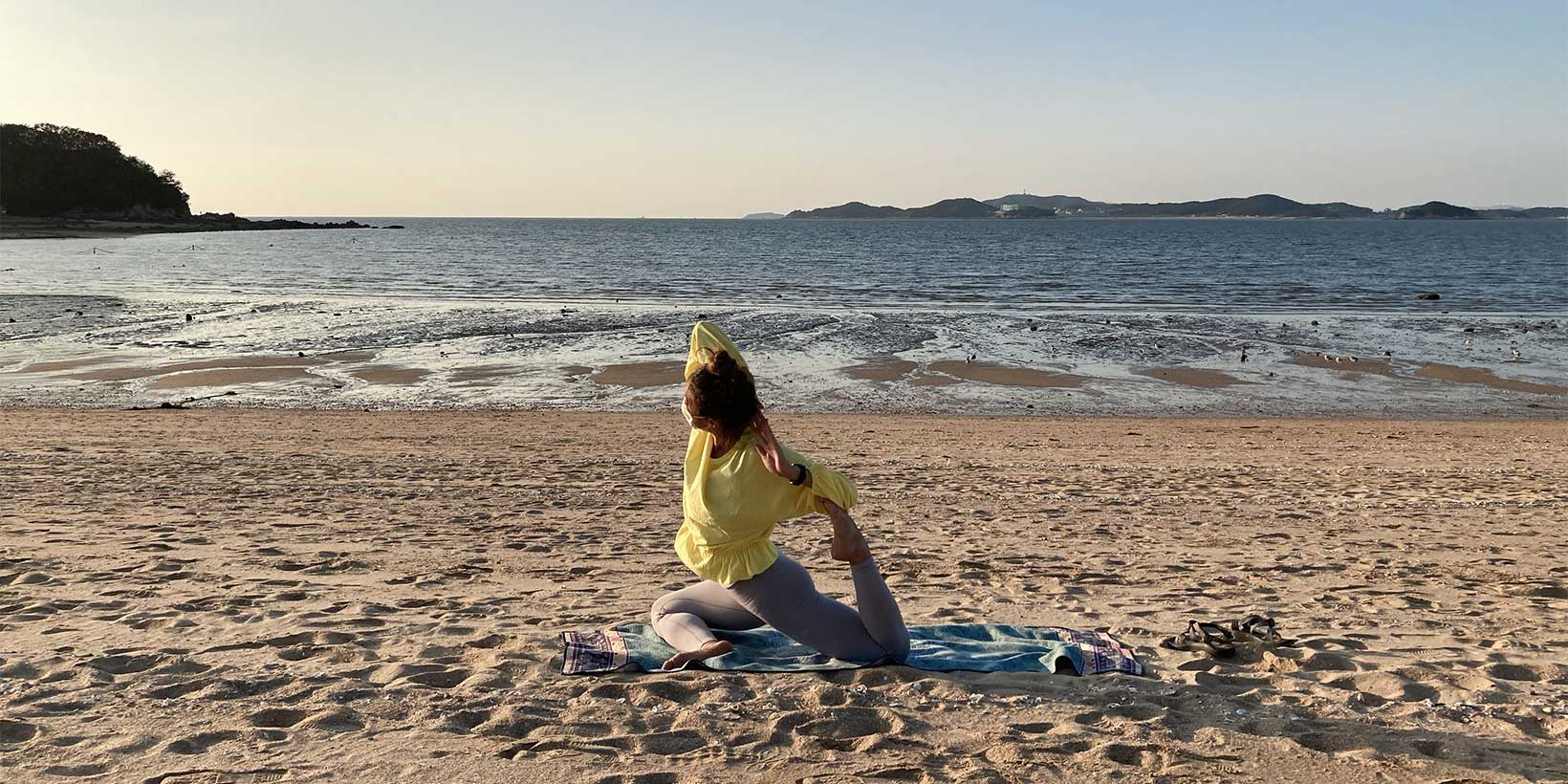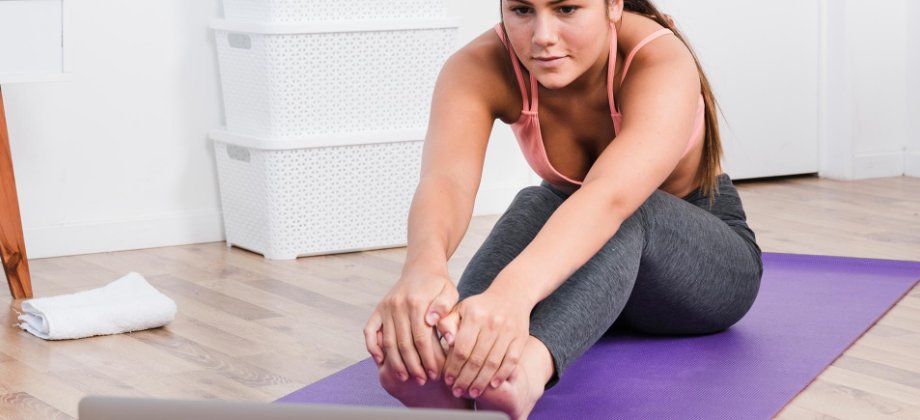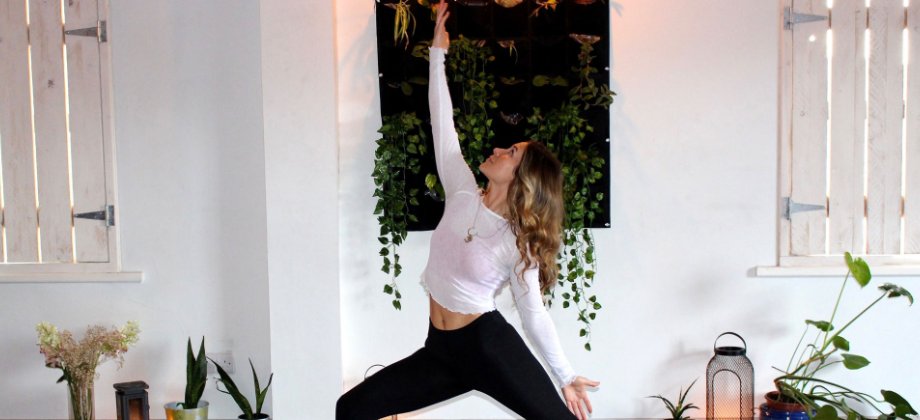
How to Cue and Demonstrate Asanas in Online Yoga Classes
Recently, I wrote about how to use props in online yoga classes. So today we’ll look at another set of skills for teaching online: how to effectively cue and demonstrate postures and transitions.
Firstly, it’s worth noting that good teaching skills do transfer from in-person to online teaching. If you’ve spent time developing your cueing and demonstrating techniques and you know how to attune to your yogis’ needs face-to-face, you’ll find it much easier to do the same online. So for today, I’ll focus on adapting your existing skills to the world of virtual yoga.
With a few simple tweaks and a shift in awareness, you can teach online with confidence, and help your students deepen their yoga practice from their own living rooms.
Verbal cues for the whole class
The skill: You’re using careful and concise choice of words to guide a group of yogis into a posture, or help them explore it in a new way once they’ve arrived in the posture.
From a teaching skill perspective, I’d always suggest that teachers learn to cue postures without using visual demonstrations at all. Generally speaking: Demonstrations are a useful backup to verbal cues* — but verbal cues are much more powerful when it comes to helping students experience a posture without simply trying to make their bodies look the way you’re making your body look.
*There are exceptions, of course, when demonstrations become more important: like teaching to hard of hearing groups, or teaching when you don’t share a common language.
Verbal cues could have a huge range of different intentions; from laying the basic foundations of a posture and correcting unhelpful movement patterns, to guiding students into experiencing a posture in a different way; or introducing another energetic or philosophical level to the experience.

Adapt it for online: Speak clearly and slow it down. During online classes, you have no control over the quality of sound your yogis are getting on the other side of the screen. Give them the best chance of hearing you loud and clear by taking it slow, and pause between each instruction or sentence in case there’s a lag in the sound.
And be less precious about lefts and rights. You might have noticed in your in-person classes that lots of students find it difficult to follow verbal left/right instructions, especially when they’re in the flow of a practice. While it’s conventional to teach each posture or flow on the right side first, and then the left, avoid actually saying “now we’ll do this on the left side” while you’re teaching online. Cue the right side first, then when you get to the second side simply call it “the second side”, or “the other side.”
Why? Because if a yogi doesn’t hear you cue the right side first, and starts on the left instead, they’re more likely to repeat the posture or flow on the same side if you specify left on the second round. They don't have you in front of them demonstrating, and they don’t have a room full of fellow students to help them pick up on the cues they missed.
Verbal cues for individual students
The skill: You’re using targeted verbal cues to help one particular student. They might be struggling to understand a posture and need additional cues to the ones you’ve already given the whole class, for example. Or once they’re in the posture, you might notice that they could benefit from trying a different variation.
Adapt it for online: Avoid confusion for the rest of the class by starting the cue with the name of the person you’re talking to.
Then, no matter what kind of cue you’re about to give, start it with a positive comment. Being singled out can feel stressful, so make it kind and gentle, and avoid going into detail about what the student is doing wrong — instead, give simple cues to help them correct or deepen the asana.
If you need to, make notes and drop individual students a message or email (or even better, a quick video of you explaining and demonstrating the posture) after the class. Remember that your role is to help your yogis get the most out of their practice, and you need to be creative about how you do that when you can’t just walk up to their mat to have a quiet word.
Demonstrating a posture
The skill: You’re showing students what an asana looks like — in a general sense, not specific to their unique bodies — to help them understand it quickly and easily.
Adapt it for online: When you’re teaching online, I recommend demonstrating as little as possible. Well, I always recommend this — but it’s even more important for virtual classes. Your attention needs to be on your students; you’re looking at them, observing their practice, talking them through it. If you demonstrate through the whole class, it’s impossible to know what your students are doing.
So choose your moments to demonstrate. If you’re teaching a posture that’s new to the class, show them. If you see that everyone’s confused after your verbal cue for a posture, offer a quick demonstration to get them into it before you talk through the posture in more detail. Go minimal!
At any given moment, your job is to choose the tool that will be most helpful for your students, and to use it in a way that supports their overall experience of the practice.
Demonstrating a transition
The skill: You’re showing students, with your own body, how to transition from one position to another. Again, you’re using demonstration as a tool to help them access the transition quickly — you’ll use verbal cues to go into more detail.
Adapt it for online: A good demonstration doesn’t interrupt the flow or energy of the class any more than absolutely necessary. For online classes, this is tricky, because students have to look at their screens in order to watch your demonstration.
So when you need to demonstrate a transition, and especially if it’s a complex transition, make it an active part of your teaching technique. Instead of just doing it with them, ask everyone to pause and sit on their mats and watch you move through the transition slowly. Then, once they’ve watched you do it, you sit still and use verbal cues to talk them through the transition.
Cues and Demonstrations as Tools
Remember that cues and demonstrations are both teaching tools. At any given moment, your job is to choose the tool that will be most helpful for your students, and to use it in a way that supports their overall experience of the practice.
If you demonstrate your way through every online class, you won’t be able to interact much with your students — so you’re at risk of giving a performance, rather than teaching a class. And if you repeat the same verbal cues class after class, without finding new ways for your language choices to reach students and aid their practice, they’ll stop listening to you.
Pack your toolbox with everything you have, and be ready to take out a different tool if the one you’re using doesn’t seem to be working. Observation is a tool that is always a part of any teaching practice; and as you observe, you can adapt to the class and support your yogis with curiosity and creativity.






